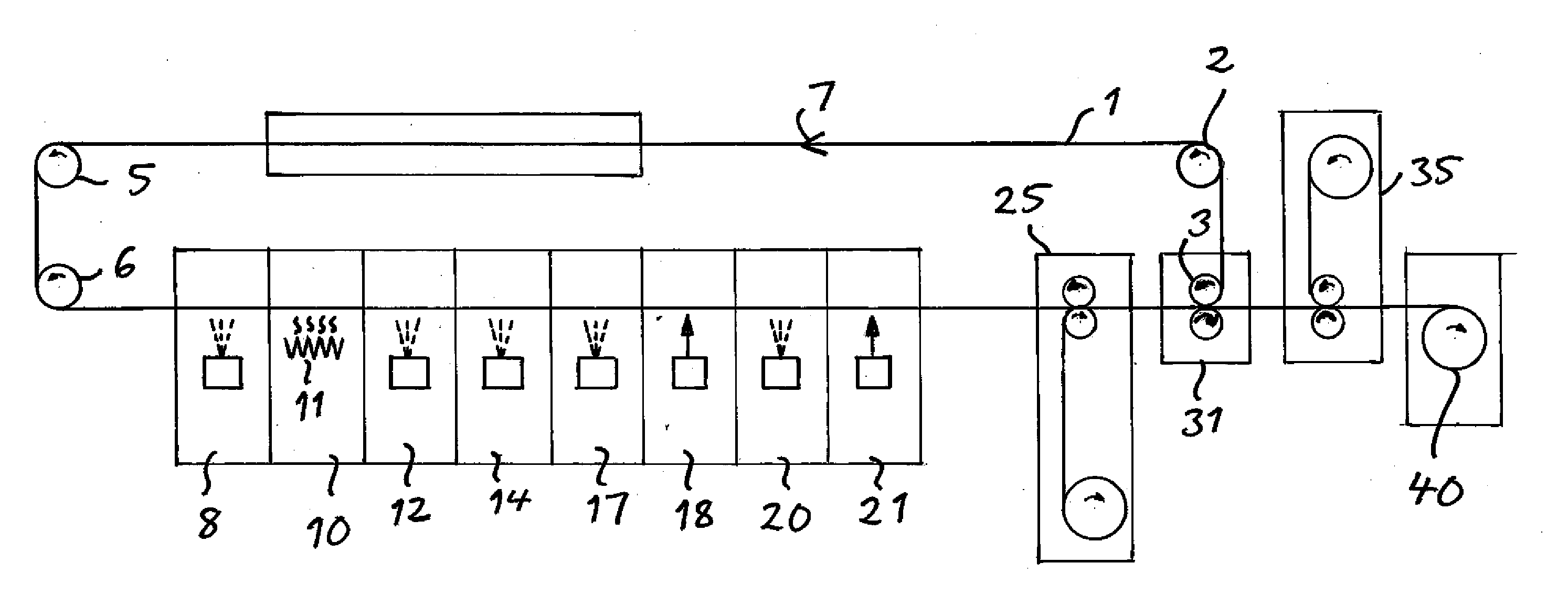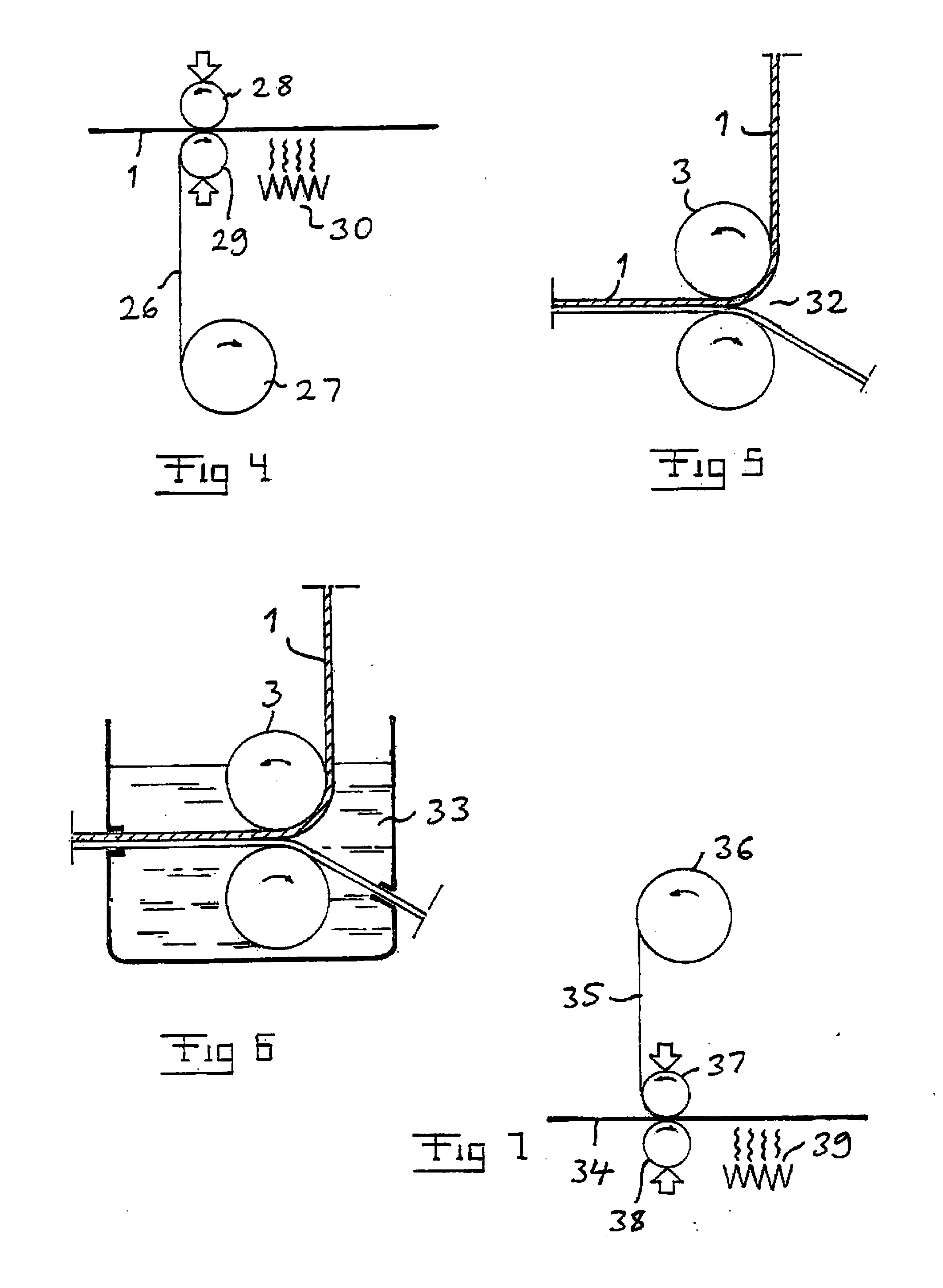Method and an Apparatus for Producing a Solar Cell Module and a Solar Cell Module
a technology of solar cell module and apparatus, which is applied in the direction of turning machine accessories, final product manufacturing, drawing profiling tools, etc., can solve the problems of one costly component difficult for solar energy generation technique to successfully compete with other more mature energy generation techniques, and production cost of solar cell module, so as to facilitate the separation of solar cell film from the surrogate substrate. , the effect of positive influen
- Summary
- Abstract
- Description
- Claims
- Application Information
AI Technical Summary
Benefits of technology
Problems solved by technology
Method used
Image
Examples
Embodiment Construction
[0041]Methods for producing a continuous film of at least one solar cell module according to different embodiments of the invention will now be described while referring to FIG. 1 showing the general construction of an apparatus for continuously producing a continuous film of at least one solar cell module according to an embodiment of the invention while in parallel making reference to FIG. 2-8 for explaining different steps of such a method.
[0042]The apparatus comprises an endless belt 1 preferably of steel with a low average surface roughness and means in the form of diverting rollers 3-6 configured to move the belt 1 in a continuous loop in the direction of the arrow 7. The belt may have a width of as much as 500 cm and a length of more than 100 meters.
[0043]The belt is configured to form a surrogate substrate and will in the path along said loop first reach a chamber 8 in which a release layer 9 (see FIG. 2) is deposited onto the belt 1. The release layer may be deposited by fo...
PUM
| Property | Measurement | Unit |
|---|---|---|
| surface roughness | aaaaa | aaaaa |
| surface roughness | aaaaa | aaaaa |
| surface roughness | aaaaa | aaaaa |
Abstract
Description
Claims
Application Information
 Login to View More
Login to View More - R&D
- Intellectual Property
- Life Sciences
- Materials
- Tech Scout
- Unparalleled Data Quality
- Higher Quality Content
- 60% Fewer Hallucinations
Browse by: Latest US Patents, China's latest patents, Technical Efficacy Thesaurus, Application Domain, Technology Topic, Popular Technical Reports.
© 2025 PatSnap. All rights reserved.Legal|Privacy policy|Modern Slavery Act Transparency Statement|Sitemap|About US| Contact US: help@patsnap.com



